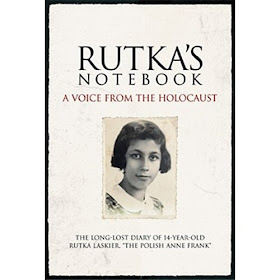
A Friend Called Anne: One Girl's Story of War, Peace, and a Unique Friendship with Anne Frank provides young readers with yet another unique look at the life of Anne Frank. The remembrances of Jacqueline van Maarsen, as written by Carol Ann Lee, enhance our knowledge of Anne's life before the Holocaust. Additionally, because Jacqueline's father was Jewish while her mother was Catholic, Jacqueline's experiences during the war in Amsterdam were different from many of the survivor stories that we read.
Jacqueline and Anne were very best friends and when Anne went into hiding, diving under as it was known in Dutch, and Anne was sad to leave her friend behind. Once settled in the Secret Annex, Anne wrote a letter to her friend Jacqueline on September 25, 1942:
Dear Jacquleine,
I am writing this letter in order to bid you goodbye....Later, of course, you will be able to tell people that you had a farewell letter from me....I hope that we will always stay best friends until we meet again. Anne
Unfortunately, the two friends never met again. Anne knew that she could not send the letter to her friend, so she placed it inside her diary. During the war, Jacqueline's mother managed to convince the authorities that her children were good Catholics by removing their yellow stars and taking them to church whenever possible. This act likely saved their lives. After the war, in June 1945, Mr. Frank visited Jacqueline and gave her not one, but two letters, written to her from Anne. After the Diary was published, it was apparent that Jackie was Jopie in the diary and many people wanted her to comment on her friendship with Anne. Still it was 1986 before Jackie wrote about her friendship with Anne and the terrible experiences during the Holocaust.
A timeline of Holocaust events, especially in Amsterdam and the Netherlands, concludes the book.
TITLE: A Friend Called Anne: One Girl's Story of War, Peace, and a Unique Friendship with Anne Frank
AUTHOR: Jacqueline Van Maarsen, retold by Carol Ann Lee
COPYRIGHT: 2005
PAGES: 163
TYPE: non-fiction, memoir
RECOMMEND: I liked this new and unique perspective on the life of Anne Frank, as well as the Holocaust experiences of the author.
AUTHOR: Jacqueline Van Maarsen, retold by Carol Ann Lee
COPYRIGHT: 2005
PAGES: 163
TYPE: non-fiction, memoir
RECOMMEND: I liked this new and unique perspective on the life of Anne Frank, as well as the Holocaust experiences of the author.








